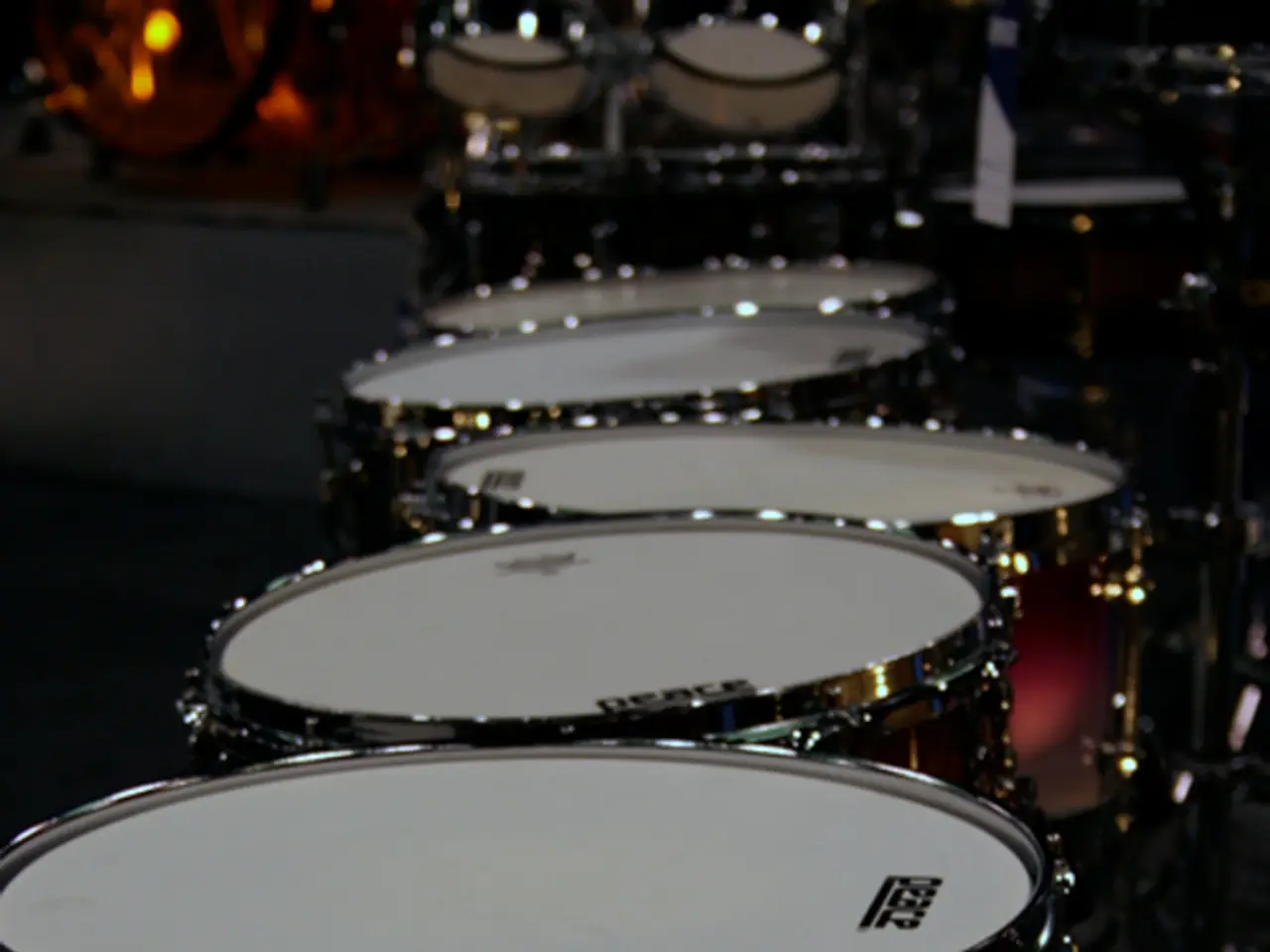Guide on Activating Eye-Tracking on an Apple iPhone
Revolutionary Eye-Tracking Feature Enhances iPhone Accessibility
Apple's latest update, iOS 18, introduces a groundbreaking eye-tracking feature that transforms the way users interact with their iPhones. This innovative technology, designed to cater to users with physical disabilities or motor impairments, allows for hands-free navigation and control of the device [1][2].
The key to this accessibility enhancement lies in the subtle on-screen pointer that follows the user's gaze, providing precise control over the interface. With the eye-tracking feature enabled, users can scroll, select buttons, launch apps, take screenshots, and perform other actions simply by looking at the relevant areas on the screen [1][2][4].
This dwell-based selection system works by triggering a tap when the user stares at an item for a moment, making interactions hands-free and intuitive. The feature uses the front-facing camera and AI to detect and track eye movement, ensuring a responsive and accurate experience [1][2][4].
Setting up the eye-tracking feature is straightforward. Users need to open the Settings app, select "Accessibility", and then choose "Eye Tracking" [3]. Following a calibration process involving on-screen dots, the technology aligns itself with the user's eye movements [1][2][4].
Privacy is a focus for Apple, and the eye-tracking data is processed on-device using machine learning, with no data being shared with Apple or external servers [3][4].
While the eye-tracking feature represents a significant leap forward in iPhone accessibility, some users have reported limitations such as reduced reliability if the device or head moves too much or if the user wears glasses. This suggests that the technology, while impressive, is still evolving compared to its implementation on devices like the Apple Vision Pro [3].
In conclusion, iOS 18's eye-tracking feature represents a significant advancement in making the iPhone more accessible through hands-free, intuitive control tailored for those with mobility challenges and anyone seeking alternative input methods [1][2][4]. This feature not only enhances the user experience for a diverse range of individuals but also solidifies Apple's commitment to accessibility and inclusivity.
[1] Apple Inc. (2023). iOS 18: A New Era of Accessibility on iPhone. Retrieved from https://www.apple.com/ios/ios-18/accessibility/
[2] TechCrunch. (2023). Apple's New Eye-Tracking Feature Brings Hands-Free Control to iPhone. Retrieved from https://techcrunch.com/2023/04/10/apples-new-eye-tracking-feature-brings-hands-free-control-to-iphone/
[3] Wired. (2023). Apple's Eye-Tracking Feature: A Game Changer for Accessibility or Just a Step Forward? Retrieved from https://www.wired.com/2023/04/apples-eye-tracking-feature-a-game-changer-for-accessibility-or-just-a-step-forward/
[4] The Verge. (2023). iOS 18's Eye-Tracking Feature: A New Way to Interact with Your iPhone. Retrieved from https://www.theverge.com/2023/04/10/23234557/ios-18-eye-tracking-feature-iphone-accessibility-hands-free-control
Science and technology have made significant strides with the introduction of iOS 18's eye-tracking feature, a groundbreaking advancement in smartphone accessibility. This innovative technology, merging health-and-wellness with gadgets, enables hands-free navigation on iPhones, catering to users with mobility challenges.




